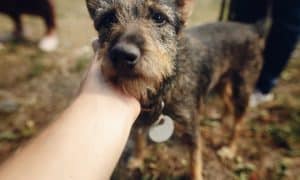“This post contains affiliate links, and I will be compensated if you make a purchase after clicking on my links.”
Looking for Tips on Dog Aggression? Worry no more. Sarah Hodgson, a dog trainer, columnist, and best-selling author, shares her own advice on how to prevent your dog from being too noisy or too aggressive and connect well with him. Like children who need proper training in shaping up his basic instincts and natural defenses, a dog’s behavior also needs to be trimmed down and controlled well by his owner. Take a look at this article from Larchmont-Mamaroneck Patch, as Hodgson reveals her Tips on Dog Aggression.
During my lecture, two points made the greatest impact on my audience, and I offer them to you for consideration. The more we know about another species, the better able we are to improve their overall existence and ultimately their behavior.
- Self-Protective Aggression. This is defined as a situation in which dogs show aggression towards strangers (dogs or people) who approach their personal space, either inside the home or when walking (often on leash) away from the home. While it often gets confused as territorial aggression, it is more fear-based and self-serving. Seeds of this fearful, reactive behavior can be seen early. When a young dog is approached by often well-intentioned admirers, he may misread this adoration as a predatory approach. As this same puppy matures, he may assume a more self-protective stance and self-protective aggression is the result. It is a common form of aggression. Ideally puppies are raised or dogs are taught to look to their people for reassurance, but unless owners are properly “trained” to watch for this reaction, it often goes unnoticed until it becomes more pronounced. Generic dog training should (though often doesn’t) teach owners how to “listen” to their dog’s behavior;
- Territorial Aggression A home is a dog’s den. It is a place where they should feel safe, nurtured and protected. The familiar areas outside a home are considered “territory” and dogs are prone to alert to all activities surrounding the territory. The dog that barks frenetically and runs the periphery of the territory is simply assuming the task of boarder patrol and responding to the consequent attentions of their people. If you yell at your dog for doing this, he will translate it into barking – he’ll think you’re backing him up. If you try to grab at or chase your dog when he runs at or chases another dog, you will heighten his awareness to the alarm and guarantee a repeat performance – often of escalating intensity. A more pronounced aggressive display often develops.
So how does one cope with these reactive behaviors or how can you arrest the tendencies in early puppyhood? The first step is empathy – to recognize your dog as a thinking, feeling, responsive being that will react in relatively predictable way due to a mix of genetic programming and human reinforcement.
Next you need to assume the role of the authority figure and teach them human language as you’d teach a foreigner English as a second language. Once you’re heading down that road, every effort must be made to expose and link more positive reactions to overwhelming situations (rewards may be in the form of praise, food, or favored toys).
The two types of reactions listed above result from a puppy maturing with the perception that their reactions are acceptable and warranted: that unpredictable noises may bring chaos, and that unfamiliar people/dogs are dangerous. And further – and most importantly, that their behavior controls the intensity of the situation, keeping “danger” at bay.
Dog aggression is one serious matter. It not only affects the safety of your dog, but also the safety of your family, friends, and neighbors. Some people are easily startled by raging dog barks and some think they can be too noisy. As the owner of your dog, it is also your responsibility to train him well and communicate to him about these behaviors of his. While a dog has a natural instinct for self-defense, not all of the things around him are dangerous, and he must be taught that way.
We hope you found these tips on dog aggression to be helpful. Do you have some tips you have used and found helpful? If so, please share with other readers below.
























This piece of writing presents clear idea for the new visitors of blogging, that genuinely how
to do blogging.
Doug H
says:I once heard it said that ” you have to show a dog who is boss “.
I find it is more like this… ” You are already the boss… with the house, the water bowl, the food, the toys and the yard. What is at issue is what sort of boss are you going to be? An overbearing, punishing, unreasonable boss or a boss who learns how to motivate his dog in dog terms and who recognizes a dog can never be a human, nor have human motives or ‘smarts’ …”